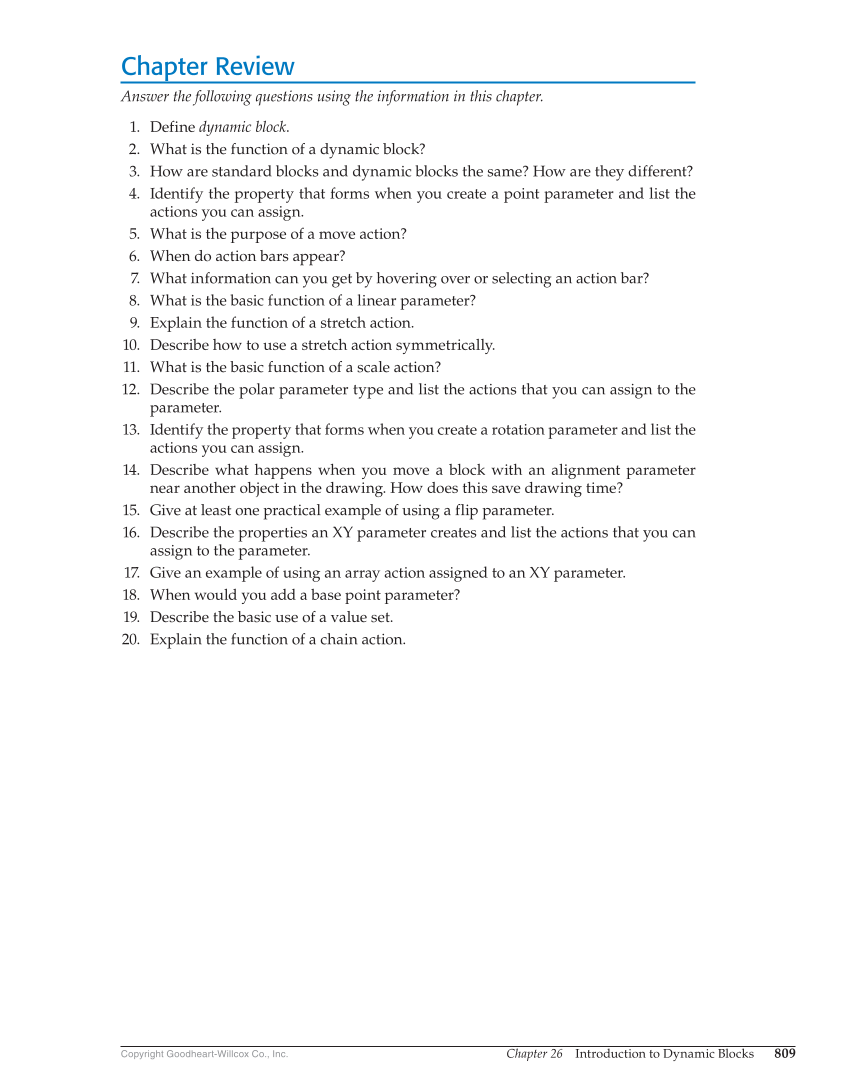Chapter 26 Introduction to Dynamic Blocks 809 Copyright Goodheart-Willcox Co., Inc. Chapter Review Answer the following questions using the information in this chapter. 1. Define dynamic block. 2. What is the function of a dynamic block? 3. How are standard blocks and dynamic blocks the same? How are they different? 4. Identify the property that forms when you create a point parameter and list the actions you can assign. 5. What is the purpose of a move action? 6. When do action bars appear? 7. What information can you get by hovering over or selecting an action bar? 8. What is the basic function of a linear parameter? 9. Explain the function of a stretch action. 10. Describe how to use a stretch action symmetrically. 11. What is the basic function of a scale action? 12. Describe the polar parameter type and list the actions that you can assign to the parameter. 13. Identify the property that forms when you create a rotation parameter and list the actions you can assign. 14. Describe what happens when you move a block with an alignment parameter near another object in the drawing. How does this save drawing time? 15. Give at least one practical example of using a flip parameter. 16. Describe the properties an XY parameter creates and list the actions that you can assign to the parameter. 17. Give an example of using an array action assigned to an XY parameter. 18. When would you add a base point parameter? 19. Describe the basic use of a value set. 20. Explain the function of a chain action.
